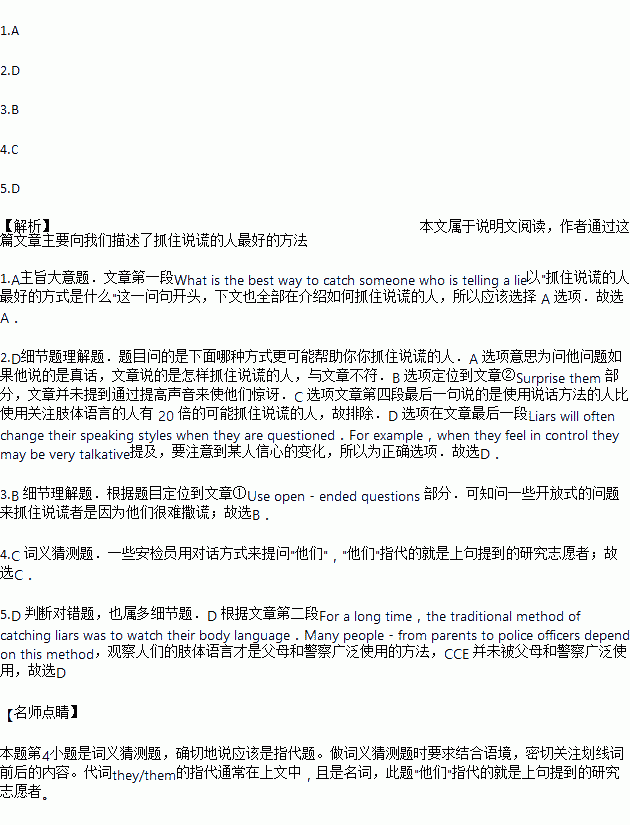题目内容
What Ls the best way to catch someone who is telling a lie?
For a long time, the traditional method of catching liars was to watch their body language, Many people - from parents to police officers depend on this method, But does a person’s body tell us the truth?
According to a new study, it is not the case. Researchers in the UK recently found that talking seems to be the best way to smoke out a liar. Their study look place at an airport.
The researchers asked volunteers to pretend they were real passengers and then lie to airport security officers. Some of the officers used conversation methods to question them, while other officers depend on their body language. The officers using the talking method were 20 times more likely to catch the liars.
Like many methods, this talking technique has a name. It is called. Cant rolled Cognitive Engagement or CCE for short. Here are four ways of catching a liar.
① Use open-ended questions.
These are the opposite of “Yes” and “No” questions. Open-ended questions force the person to continue the story of their lies until they are caught in their own web of lies.
② Surprise them.
Ask questions they may not think you are going to ask. Ask questions that are surprising or off-topic. This will make it harder for them to keep lying.
③ Look for small details that do not make sense.
Ask them details in their stories and look for facts that seem to disagree with each other. But do not let them know you know. Just let them dig themselves deeper into a hole.
④ Watch for changes in confidence and speaking styles.
Liars will often change their speaking styles when they are questioned. For example, when they feel in control they may be very talkative. But if they feel they are losing control, they may not talk much at all.
1.What is the best title of this passage?
A. How to Catch a Liar B. Airport Security Improved
C. CCE Method Never Fails D. Lie with Body Language
2.Which of the following methods is most likely to help you catch a liar?
A. Ask the person if he is telling the truth.
B. Surprise the person by raising your voice.
C. Focus on the person’s body language.
D. Notice changes in the person’s confidence.
3.Why should you ask open-ended questions in order to catch a liar?
A. Because they are easy to answer.
B. Because they are harder to lie about.
C. Because they are off the topic.
D. Because they change your talking style.
4.Who does the word “them” refer to in the fourth paragraph?
A. Security officers.
B. Real passengers.
C. Study volunteers.
D. English researchers.
5.Which of the following is NOT true about the CCE method?
A. It aims to smoke out liars through conversations.
B. It works better than simply reading body languages.
C. It focuses on what someone says and how he says it.
D. It has been widely used by parents and police officers.

